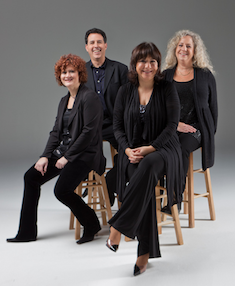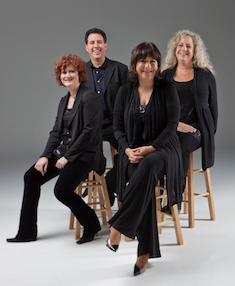
The most fascinating moment of the Ives String Quartet’s concert Friday night at St. Mark’s in Palo Alto was the last movement of Lou Harrison’s Quartet Set titled, Usul. It was unusual because the viola and violin lines were in perfect unison for the entire movement save for solo statements, which would be answered back by the group, and always in unison. As simple as it sounds, I can’t think of such an instance of prolonged monophony anywhere else in the string quartet literature.
One of the hallmarks of classical music is complexity. Whether it’s harmony, counterpoint, dynamics, melodic games, or what not, composers generally can’t help complicating their music — that’s what keeps it interesting. If anything is monophonic it only lasts for a phrase or so before some sort of development of the idea proceeds. Harrison displays remarkable restraint in keeping the entire movement monophonic.
Classical Middle Eastern music is defined by melodic monophony, which is not to say that it is monotonous. The complexity is elsewhere — in improvisation, tone color, microtonal maqams, ornaments, and especially percussion. Lou Harrison asks the cellist to play the role of a dumbek (Middle Eastern hand drum) player — providing rhythmic counterpoint to the melodic line in the upper strings. Even here there is no true absolute monophony.
It was strange to hear such a thoroughly classical group as the Ives Quartet play “world music.” They still kept their conservatory nuances with gentle tapers to end every phrase, a sweet singing vibrato, and impeccable ensemble. This is not the kind of sound that traditional Middle Eastern ensembles makes. The ethnic musicians grind their strings more, and don’t play exactly together. They often don’t read music, feeling it by ear instead — everything that classical musicians are taught not to do.
They still kept their conservatory nuances with gentle tapers to end every phrase, a sweet singing vibrato, and impeccable ensemble
The result in combining Turkish monophony with classical refinement was a heavenly sound — peaceful and full of tonal girth that comes from the instruments on the same pitch, yet also nimble and fading out like smoke. Stephen Harrison made an admirable transition to percussionist slapping the cello with his hand and hitting the tailpiece with an old soundpost. Given that he was tapping a delicate and expensive instrument, again the phrasing felt delicate and genteel — far from what a traditional dumbek would feel like yet fascinating in its relation to the original. The best fusion between two cultures is not when trying to assimilate the other, but when something new arises. This is why I am always glad when ensembles introduce me to a piece outside the general repertoire.
In the spirit of their namesake, the Ives Quartet makes it a rule to include a commission or a rarely performed work in practically every concert. This exploration into the far reaches of the repertoire was balanced by good ol’ Brahms and Mozart — music that the double-couple quartet has probably already played together many times. Yet, familiarity sometimes breeds lack of awe. The Mozart was under-rehearsed to the point of sloppy, but these are such seasoned veterans that it worked anyway. They know the piece inside and out — the Mozartian characters come naturally to them and each voice cut through with bold independence.
In the glorious Brahms G Major Quintet I was yearning for more ecstatic energy in the infamous cello solo that opens the piece. Keeping with the practice from the San Francisco Conservatory of Music’s chamber music program, in which students learn by playing alongside master guest artists, first violinist Bettina Mussumeli welcomed former student Alisa Rose as a guest violinist, while Susan Freier switched to viola alongside Jodi Levitz. The lilting cross rhythms in the slow movement were masterfully phrased, growing and ceding like a boat on gentle waters. For the ending, Brahms’ typical energy-die-down-followed-by-a-last-burst was brilliantly executed.

